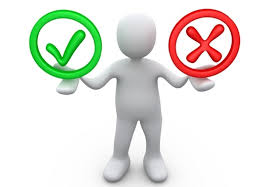
Performance Standard 5: Assessment Strategies:
The teacher systematically chooses a variety of diagnostic, formative, and summative assessment strategies and instruments that are valid and appropriate for the content and student population.
|
Performance Indicators at the Level III Level
|
|
5.1 Aligns student assessment with the established curriculum and benchmarks.
5.2 Involves students in setting learning goals and monitoring their own progress.
5.3 Varies and modifies assessments to determine individual student needs and progress.
5.4 Identifies and uses formal and informal assessments for diagnostic, formative, and summative purposes.
5.5 Uses grading practices that report final mastery in relationship to content goals and objectives
. 5.6. Uses assessment techniques that are appropriate for the developmental level of students.
5.7 Collaborates with others to develop common assessments, when appropriate.
|
|
Performance Rubrics
|
|
Level I
|
Level II
|
Level III
|
Level IV
|
|
The teacher candidate chooses an inadequate variety of diagnostic, formative, and summative assessment strategies or the instruments are not appropriate for the content of student population.
|
The teacher candidate inconsistently chooses a variety of diagnostic, formative, and summative assessment strategies or the instruments are sometimes not appropriate for the content or student population.
|
The teacher candidate systematically and consistently chooses a variety of diagnostic, formative, and summative assessment strategies and instruments that are valid and appropriate for the content and student population.
|
The teacher candidate continually demonstrates expertise and leads others to determine and develop a variety of strategies and instruments that are valid and appropriate for the content and student population and guides students to monitor and reflect on their own academic progress. (Teacher candidates rated as Exemplary continually seek ways to serve as role models or teacher leaders. This level is not intended for formative assessments of teacher candidates and may only be used in the summative assessment with proper documentation of the teacher candidate’s consistent performance at this level.)
|
|
What it is:
|
What it isn't:
|
- Using assessment in pursuit of student success.
- Understanding and using diagnostic assessment – the purpose of diagnostic assessment is to ascertain, prior to instruction, each student’s strengths, weaknesses, knowledge, and skills and to permit the teachers to remediate, accelerate, or differentiate the instruction to meet each student’s readiness for new learning.
- Understanding and using formative assessment – formative assessment is an assessment that is integral to the instructional process to help teachers adjust and modify their teaching practices so as to reflect the progress and needs of the students.
- Understanding and using summative assessment – summative assessment can occur at the end of a chapter, unit, semester or a school year to determine the student attainment of the standards of certain subject areas.
- Holding students accountable for their own learning.
- Providing opportunities to re-expose students to content.
- Helping students to retain and transfer what they have learned.
- Giving regular feedback and reinforcement.
- Offering timely and specific feedback.
- Using open-ended performance assignments.
- Analyzing student assessments to determine the degree to which the intended learning outcomes align with the test items and student understanding of objectives.
- Interpreting information from teacher-made tests and standardized assessments to guide instruction and gauge student progress by examining questions missed to determine if the student had trouble with the content or the test structure.
- Aligning assessments with the framework of learning targets and instruction.
- Providing frequent informative feedback, rather than infrequent judgmental feedback.
- Involving students deeply in classroom review and monitoring.
- Documenting through proper record keeping the learning results.
- Assessing prior knowledge at the beginning of most instructional units/courses.
- Learning from student misconceptions with formative assessments to adjust teaching to meet student needs.
- Providing teacher feedback assessments.
- Describing students’ strengths and weaknesses based on assessments.
|
- Narrowing curriculum for assessment purposes
- Focusing on memorization, drills, and worksheets
- Allocating less time to higher-order skills
- Restricting teaching to formulated approaches of instruction
- Being concerned only with state mandated testing
|
|
Sample Questions for Conferencing:
|
- How are you using assessment data to plan your lessons?
- How are you differentiating based on diagnostic data?
- What is your process for analyzing and interpreting diagnostic data you collect on your students?
- How are you using formative assessments to adjust instruction?
- How do you differentiate based on formative assessments?
- What is your process for analyzing and interpreting formative assessments data?
- How are the summative assessments connected to the GPS/CCGPS or other standards?
- How does the data from the summative assessment inform your future instruction?
|
Reference and for more information visit
https://www.gadoe.org/School-Improvement/Teacher-and-Leader-Effectiveness/Documents/TKES%20Fact%20%20Sheets%207-11-2012.pdf
